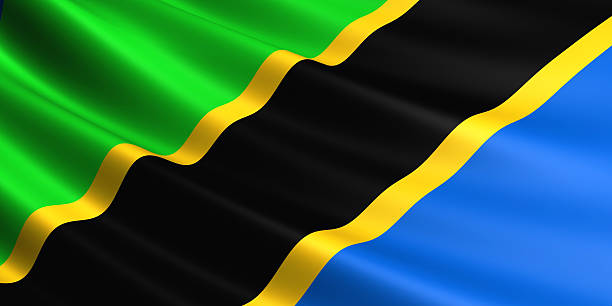In recent years, Tanzania has experienced significant growth in mobile money usage and digital financial services. However, a large percentage of the population is either unbanked or underbanked and continues to be challenged by obstacles such as insufficient access to formal financial services and high fees for transactions. Amid global movement towards decentralized and digital financial systems, stablecoin payments in Tanzania are undoubtedly going to prove themselves as a revolutionary instrument–a link between modern financial instruments and the underserved masses.
In this post, we take a look at how USDC and USDT are driving financial inclusion via stablecoins, the burgeoning crypto use in Tanzania and platforms like Transfi that are transforming financial markets.
The Financial Landscape in Tanzania: Challenges and Opportunities
Tanzania is one of several countries in East Africa where mobile money has become an important financial tool. Users can easily send, receive and store money with services like M-Pesa and Airtel Money. But still, one challenge is that access to the traditional bank is not always the easiest, especially in rural places.
More than 60 per cent of Tanzanians — who are either unbanked or just stuck on mobile wallets — are otherwise excluded from broader economic opportunities such as savings, credit, and international commerce. It is in this climate that crypto adoption in Tanzania — and in particular by way of stablecoins — is finding a receptive market.
Stablecoins and the Future of Currency in Tanzania
Stablecoins are a type of cryptocurrency built to be immune to the wild price swings in value often seen in competition among various types of digital coins. Two of the most popular are USDC (USD Coin) and USDT (Tether), which offer the speed and accessibility of cryptocurrency along with the stability of a government-issued fiat currency.
Today, USDT in Tanzania is being adopted for a wide array of use cases such as remittances, merchant payments, asset management, and digital savings. These tokens are a stable value store and address some of the volatility issues that plague other cryptocurrencies such as Bitcoin and Ethereum.
From a freelancer in Dar es Salaam getting paid in USDC by a client in Europe, to a merchant in Malaysia willing to accept USDT from across the globe, stablecoin payments in Tanzania are bringing a new degree of financial freedom and ease.
How Stablecoins Empower Financial Inclusion
Here are some of the ways that stablecoin solutions are making a difference for the unbanked in East Africa:
1. Lower Fees and Faster Transfers
Conventional remitting services and bank wire transfers can levy high fees and take days of comparison for completion. Blockchain payments in Tanzania can be done practically instantly at a fraction of the price.
2. Financial Access for the Underserved
Using a smartphone and a Tanzanian crypto wallet, anyone can accumulate in USDC or USDT, without having to seek the permission of a bank or a government body.
3. Protection Against Currency Volatility
The Tanzanian shilling, along with many other African currencies, is inflation-prone and quickly depreciates. Tanzanian digital-dollar payments are providing users with a way to store the value of their savings in a more stable currency.
4. Support for Freelancers and Microbusinesses
Tanzanians who work online — as freelancers, remote workers and small business owners — have access to new markets and clients enabled by stablecoins. They offer payment security, faster access to money and scalability.
These in-field gains demonstrate how stablecoins are working to drive financial inclusion in Tanzania from the ground up.
Product Spotlight: How Transfi Brings Access to Stablecoins
Libra One company helping to move things forward is Transfi. Transfi is laying an infrastructure to enable seamless, compliant, secure access to stablecoins in East Africa.
Here’s how Transfi is transforming the game in Tanzania:
Send and receive USDT and USDC directly to the local wallet
Cash Out stablecoins into physical cash or mobile money wallets
Have on- and off-ramps for people and companies
Have access to blockchain payments in Tanzania and don’t even need to know anything about cryptocurrency
If you’re a developer in Tanzania creating digital solutions for the world, a student studying abroad with assistance back home or a small enterprise receiving international payments, use Transfi to let you easily access borderless digital money in just a few taps.
By introducing the USDC and USDT use case in Tanzania, Transfi is becoming the bridge between traditional financial systems and the decentralised future.
Digital Dollar Payments & DeFi In Tanzania And The Bigger Picture
The effect of digital payments in dollars in Tanzania stretches beyond remittances and freelancers. It paves the way for more wide-scale decentralized finance (DeFi) in Tanzania—services such as savings pools, crypto lending and staking and beyond.
With the proliferation of crypto wallets for Tanzanians, the country is currently experiencing:
- The emergence of peer-to-peer payment networks
- Increasing concern about digital financial education
- Curiosity and Noise at the government level about blockchain innovation
In a place where foreign exchange is scarce and inflation can feel like a silent thief, financial empowerment through stablecoins in Tanzania is a major step in the right direction.
Crypto and the Tanzanian economy are becoming more connected —stablecoins aren’t just digital money, they’re a functional way to join the global economy.
Conclusion: The Future of Market Access and Stablecoins
From remittances to retail, and savings to startups, stablecoin payments in Tanzania are emerging as a life-changing force for financial inclusion. They give the unbanked access to better, less expensive, safer financial services in real time.
When infrastructure players such as Transfi step in with user-friendly solutions, stablecoins are no longer something from the future—they are a now solution to current problems.
As crypto adoption in Tanzania continues to rise, stablecoins open up a viable and scalable means to uplift the unbanked, bridge local economies to the wider global marketplace, and bring financial access in ways that are removed from traditional banks.
FAQs
Which are the most popular stablecoins in Tanzania?
The most popular stablecoins in Tanzania are USDC (USD Coin) and USDT (Tether). Both are pegged to the U.S. dollar and are used for remittances, savings and digital payments.
How can I get a crypto wallet in Tanzania?
Meanwhile, some of the crypto wallets that are available for Tanzanians include MetaMask, Trust Wallet and exchange-based wallets like Binance. Free and simple to set up, these apps may be just what you need on your next trip.
Is it legal to use stablecoin payments in Tanzania?
Although Tanzania lacks full-fledged crypto regulation, the use of stablecoins isn’t illegal. You can actually own and transact cryptocurrencies legally at the moment and platforms like Transfi operate within globally accepted compliance.
In what ways can Tanzanian freelancers utilise Stablecoins?
In today’s financial world, stablecoins provide instant global payments without the time and expense of traditional banking. Freelancers can be paid via USDC/USDT and have them turned into Tanzanian Shillings or mobile money for their use.
Is Transfi safe for sending and receiving USDC/USDT?
Yes. Transfi employs bank-level security, end-to-end encrypted transactions and meets regulatory requirements to keep users safe when both sending, and particularly receiving, stablecoins.
Table of Contents
Suggested Article
Explore our products

Make global payments at the speed of a click

Accept payments, remove borders.

Unlock Seamless Digital Currency Transactions Anywhere









.png)














